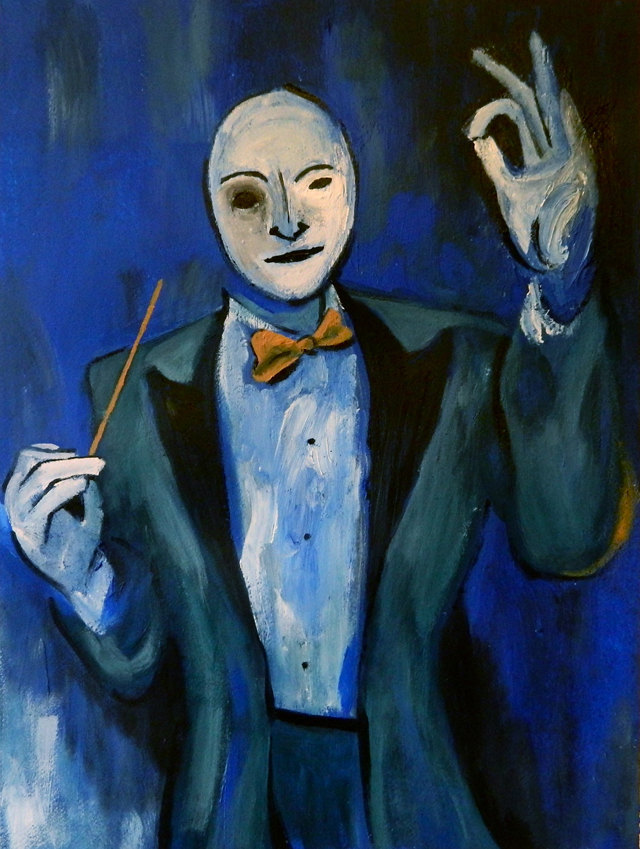10/27/2013 – Centennials
Back to Wind Orchestra – Past Concerts
Steven D. Davis
guest conductor
The Courtly Dances from “Gloriana”
by Benjamin Britten (1913-1976), arr. Jan Bach
Trauersinfonie
by Richard Wagner (1813-1883), rev. Erik Leidzen
Santa Fe Saga
by Morton Gould (1913-1996)
Variants on a Mediaeval Tune
by Norman Dello Joio (1913-2008)
Barnum and Bailey’s Favorite (1913)
by Karl King (1891-1971), arr. Glenn Cliffe Bainum

Centennials 10/27/13
Born appropriately on St. Cecilia’s Day (the Patron Saint of Music), British composer Edward Benjamin Britten (1913–1976) was the fourth child of a doting mother who encouraged his early music study. Britten lived in the USA from 1939 to 1942 in the company of Peter Pears and W.H. Auden, whose friendships were to have a profound effect on his future. During these years, Britten wrote his Violin Concerto, Sinfonia da Requiem and his first opera, Paul Bunyan. Also, the first thoughts of what was to be his most popular opera – Peter Grimes – were taking root.
Gloriana, his sixth opera, was commissioned by Covent Garden to celebrate the Coronation of Queen Elizabeth II in June 1953. Heavily criticized after its first performance, Gloriana has never found a permanent niche in any opera house. The criticism was mainly aimed at the opera’s scenario, which tended to highlight the Queen’s frailties, her personal relationship with the Earl of Essex, and the intrigues and jealousies at Court. It was thought that the persona of Queen Elizabeth I of England should have been portrayed as the monarch of a burgeoning European power. Britten was also criticized for choosing to close the opera with the spoken word, rather than musically.
Richard Wagner (1813–1883), was a German composer and conductor who was born in the Jewish corner of Leipzig. He was largely known for his “music dramas”, for which, unlike many composers of the time, he wrote the music and libretto. Wagner was also quite adept at utilizing leitmotifs, or “music themes associated with individual characters, places, ideas, or plot elements,” and he made advances in musical composition that included using chromaticism and quickly shifting tonal centers. His four-opera cycle Der Ring das Nibelungen was so complex he felt it was necessary to construct his own opera house, the Bayreuth Festspielhaus, where his stage works are still performed to this day.
Trauersinfonie, based on themes from Weber’s Euryanthe, was written to aid the torchlight procession that carried the ashes of Carl Maria von Weber from the Dresden train station to their final resting place, some eighteen years after his death in London. Wagner had conducted Weber’s music a number of times prior to 1844 and no doubt considered himself the heir to the German opera tradition to which Weber had contributed. This piece is solemn and contemplative, of which Frederick Fennell said “no apology need be made for this music.” Originally scored by Wagner for a large wind band, it was revised for symphonic band by Erik Leidzen.
Morton Gould (1913–1996) was an American conductor, composer, and pianist. He was recognized as a child prodigy very early in his life, and as a result he published his first composition before his seventh birthday. His talents led him to become the staff pianist for Radio City Music Hall when it opened in 1932. He went on to compose movie soundtracks, Broadway musicals, and instrumental pieces for orchestra and band while also cultivating an international career as a conductor. Among the honors he received were the 1995 Pulitzer Prize, the 1994 Kennedy Center Honor, a 1983 Gold Baton Award, and a 1966 Grammy Award. By the time of his death in 1996 he was widely revered as an icon of American classical music.
Santa Fe Saga, commissioned for the 1956 American Bandmasters Association convention held in Santa Fe, New Mexico, was a collaboration with ballet choreographer Elliot Feld. Programmatic in nature, it was written to evoke the history and images of indigenous culture in and around Santa Fe and consists of four distinct sections performed in one movement: Rio Grande, Round Up, Wagon Train and Fiesta.
The output of American composer Norman Dello Joio (1913–2008) spanned over half a century. He was born Nicodemo DeGioio in New York City to Italian immigrants and began his musical career as organist and choir director at age 14. By the late forties, Dello Joio was considered one of the foremost American composers. He won the 1957 Pulitzer Prize for Music for his Meditations on Ecclesiastes. In 1965, Dello Joio received the Emmy Award for the “most outstanding music written for television in the 1964-1965 Season” for his score to the 1964 NBC television special “The Louvre,” from which he created a five-movement suite for wind band entitled Scenes from “The Louvre”.
Variants on a Mediaeval Tune is a set of variations based on “In dulci jubilo”, a melody that has been used by many composers, among them J. S. Bach, as the subject for a variety of musical works. This was Dello Joio’s first original work in the wind band medium.
Often referred to as “The Granddaddy of Circus Marches”, Barnum and Bailey’s Favorite was composed by Karl King in 1913. King’s earliest known compositions date from 1909 with this, his most famous work, being written in only his fifth year of composing.
King was asked by the bandmaster of the Barnum and Bailey Circus, Ned Brill, to write a march for the circus. This has become his most famous composition, being called “the finest work written to celebrate The Greatest Show on Earth” and is one of the most recognizable marches of all time.